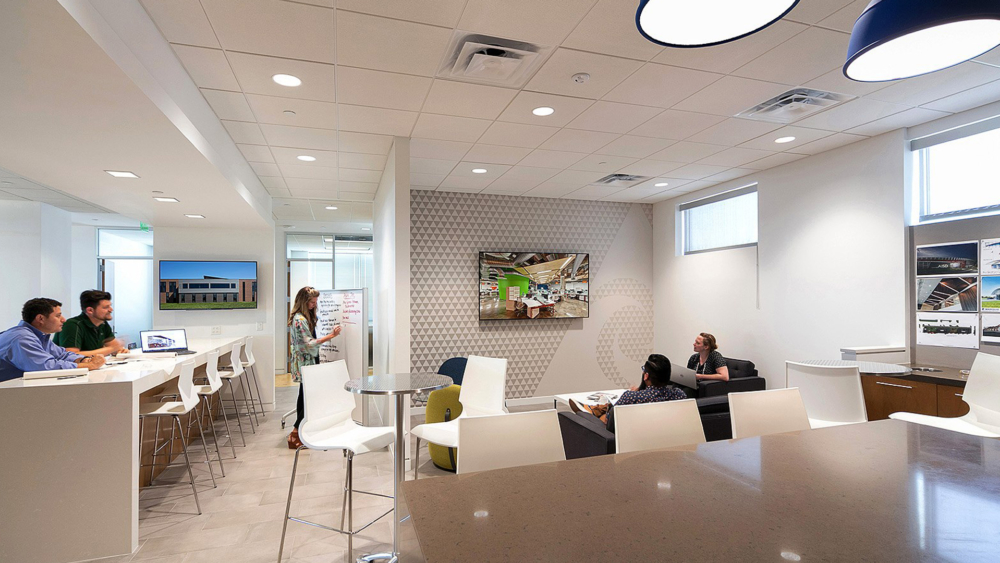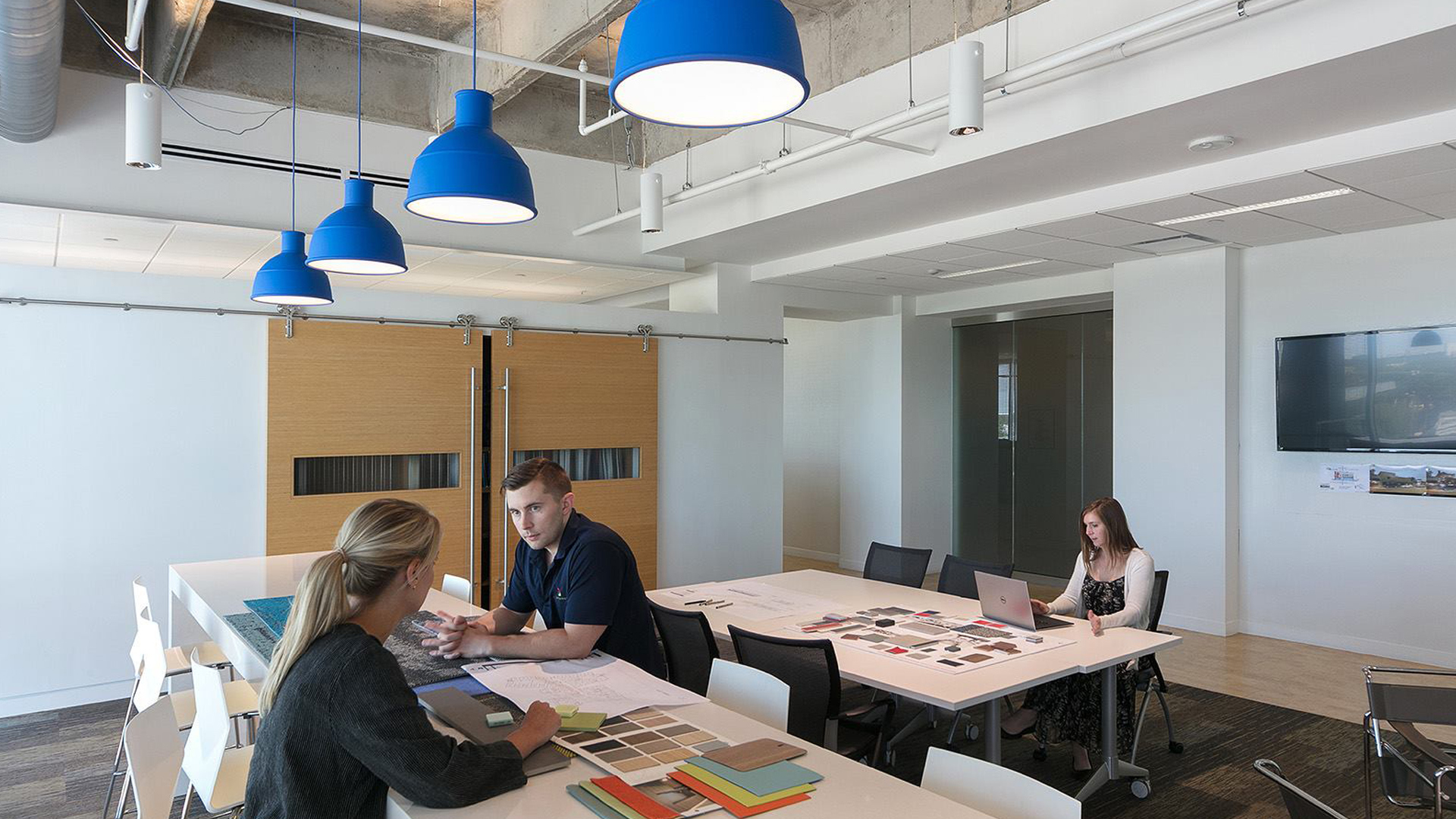
Creating Balanced Environments for the Evolving Workspace
As businesses and the services that are provided have changed over the last 50 years, the workspace they occupy has been forced to adapt as well. Paper filing systems have been replaced with the cloud, snail mail with email, and drawing tables replaced laptops with an excess of screens. Physical changes of the workplace are responding to evolving technological advances and how they assist the work we do on a daily basis. Not only are technologies advancing quicker than we can adapt, but the way we communicate, collaborate, and work has evolved. I was able to witness this change first hand during the design and remodel of our VLK Fort Worth office last year. When I began working at VLK, our office was created to house the new technology of computers and servers, and older, still readily used technology. As older technology requirements diminished an excess of under-utilized space was created. Our in-house designers were tasked with updating our spaces, flow, and aesthetics to not only work with our current technological needs, but an ever growing and changing one.
Even though open collaboration space is a current buzz word in office design, the concept is routed in the Water Cooler Effect. This is the simple idea that coworkers’ talking casually around the water cooler fosters collaboration and new ideas while allowing for employees to connect with coworkers they may not work with on a daily basis. As spaces become flexible and allow for relaxation and temporary work environments, this same concept can be applied. In VLK’s new office layout, there are many collaboration spaces spread throughout the office of varying design. There are small, medium, and large spaces to meet along with spaces centered on technology and others in a more coffee shop environment. These types of spaces allow for maximum flexibility and fit many needs a group or individual may need.

While these spaces may be used for collaboration on specific projects, they are also used as a cafe for employees to work in a casual environment. This lounge centered design benefits a generation of workers who want more than a cubicle to do their work. They don’t mind giving up some personal space if the benefit is lounge areas that can be used by the entire office. With technology’s ability to work from anywhere, this “hoteling” style of work space can be done from anywhere. These spaces begin to get tricky as they can easily be underused if under designed. It is not enough to place some couches and a table to create this environment. To be beneficial, these spaces are intentionally designed to fit the needs of many different work styles. Varying height working spaces allow for standing or lounging and access to power and presentation technology provides the functionality to the area. Mobile furniture can easily transform the space to accommodate a group or an individual who may need quite time they cannot always get in their personal open-style workstation. The balance of relaxation and productivity is difficult to achieve, but work beautifully together when in balance. VLK’s collaboration and café style work spaces are designed to allow anyone the ability to work at them for a change of environment. While it took time for employees to fully utilize the spaces, they are now being used constantly for a variety of tasks.
In today’s constantly changing environment, it is important for companies to create environments that employees want to work in and be productive in. Not only does it help attract and retain talent, it shows dedication to the employee in the same way they expect dedication out of their employees. Poorly designed collaboration spaces and hoteling stations waste space and money, however, if designed well will bring life to an office environment and utilize space in the best way possible.